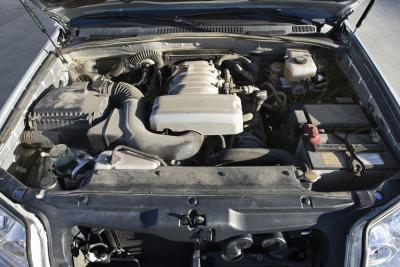
Fuel trims represent the percentage difference, positive and negative, from the default settings of the fuel-to-air ratio. Electronically fuel-injected engines adjust the fuel trim based on sensor data measuring the incoming air flow, exhaust saturation and other engine performance data. Fuel trim malfunctions primarily exist when the vehicle's computer attempts to compensate for too-rich or too-lean conditions.
Use a scan tool to read any error codes being produced by the vehicle's on-board computer. Scan tools connect to the OBD (On-Board Diagnostics) or OBDII port located under the driver's side dash. Many auto parts stores will lend you a scan tool for use in the store parking lot. Connect the tool according to the instruction manual. Read the codes and use the manual to decode the problems.
Common issues causing fuel trim malfunctions include failed injectors, failed mass airflow sensors (MAFs), failed spark plugs and failed oxygen sensors. Inspect and replace any failed parts noted by the scan tool. Failed injectors inject too much or too little fuel into the cylinders regardless of how much the computer attempts to compensate. Failed spark plugs do not fully ignite the fuel, causing rich conditions. Failed oxygen sensors result in inaccurate exhaust saturation readings.
The MAF electronically measures the incoming rate of airflow into the engine. Wires are heated with an electronic current to a specific temperature. As air moves across the wires, the wires are cooled, requiring more electricity to keep the wire at the specific temperature. Airflow is calculated proportional to the amount of electricity required to keep the wire at the specific temperature. Dirt, oils or grime can affect the accuracy of the MAF sensor. Use an MAF sensor cleaner, available at auto parts stores in a can, and spray the sensor clean. The sensor is located on the air intake system before or at the throttle body. Do not touch the wires with your fingers; they are fragile.
Remove the vehicle's negative-terminal battery cable. Depress the horn and brake pedal to discharge the on-board computer capacitor's stored electrical energy. Reconnect the negative-terminal battery cable. Start the engine. The engine resets to default settings, including fuel trim settings, until adverse conditions are reported. If the problem is solved, the engine functions normally.